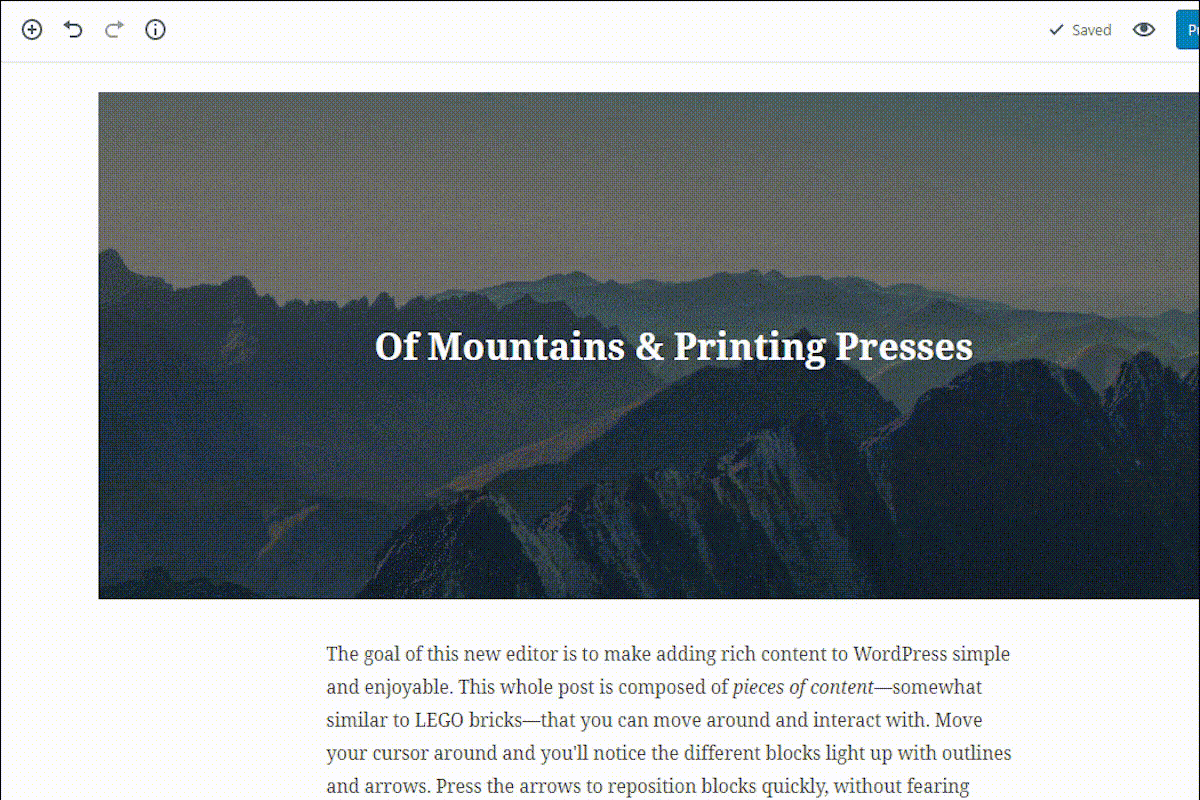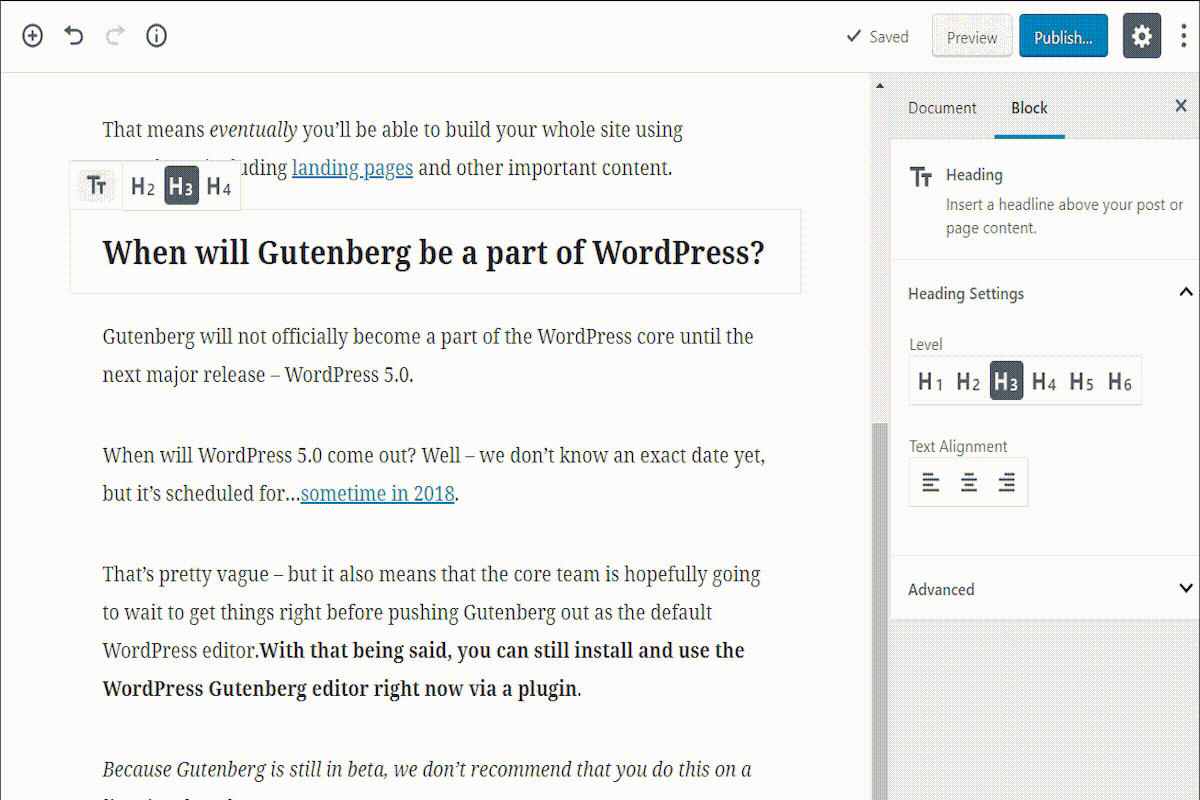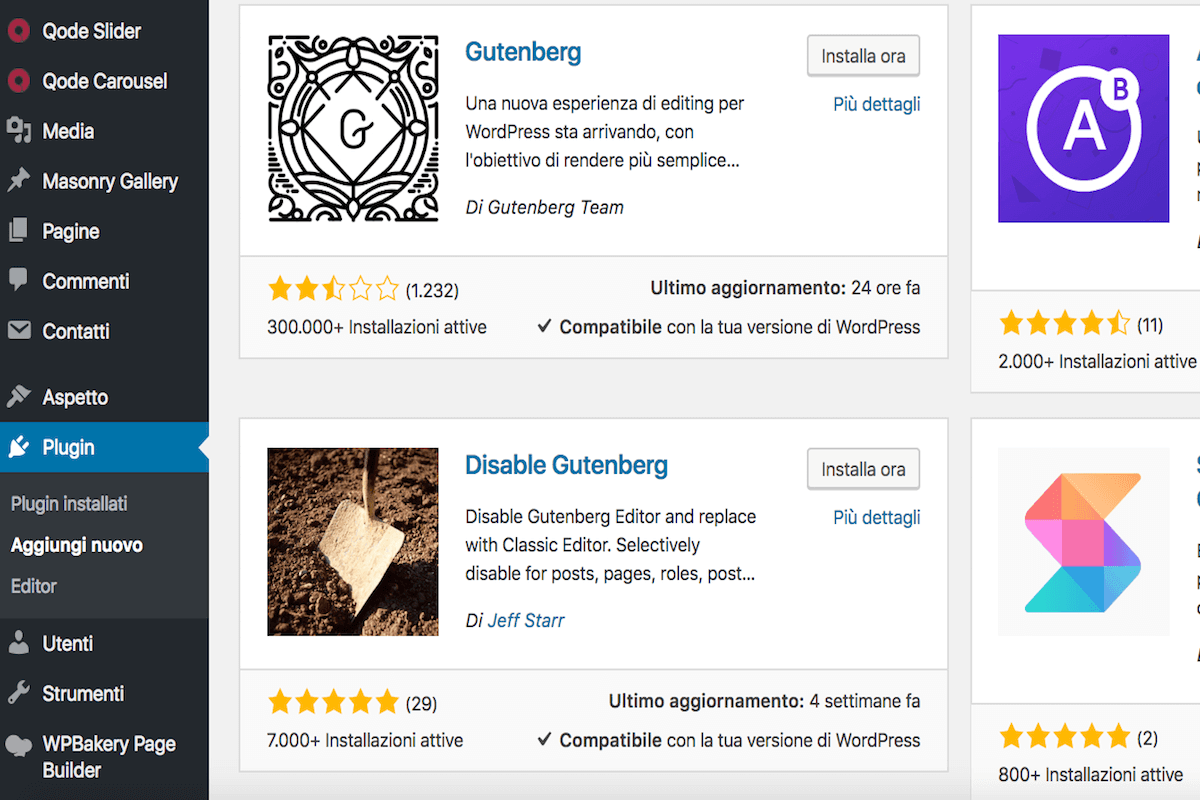
Discover Gutenberg: the new WordPress editor!
With the next 5.0 WordPress release, is expected the final launch of Gutenberg, the new editor that aims to overthrow the most famous composers. When talking about editing tools, there are conflicting opinions on which one is better to use, both from an aesthetic and coding point of view. If this is the first time you hear about Gutenberg for WordPress or you just started using it, this post will help you understanding how to use the new editor to customize the layout of your content.
What is Gutenberg exactly?
What’s Gutenberg? In short, Gutenberg is the next replacement of TinyMCE editor of WordPress (the current WYSIWYG text editor you’re writing your posts and pages with). It is not an aesthetic update only. Gutenberg will completely change the editing experience, moving toward an approach to the contents based on “blocks”. While the current editor focus is only on the content creating, Gutenberg’ final goal is going toward the content of real page-templates up to the complete customization of a website. This means that you’ll be able to build an entire website using Gutenberg, including landing pages and other important contents.
When will it be implemented in WordPress?

Gutenberg will not officially implemented in the core of WordPress until next major release, WordPress 5.0. But when will WordPress 5.0 be released? Unfortunately, a precise date has not been announced yet, but the release is excepted by the end of 2018. We know, it’s a rather vague information, but this shows how the WordPress development team wants to fix all the issues reported during the beta testing before releasing Gutenberg as default editor of CMS. with this been said, you can already install and start using Gutenberg editor through a plugin, but, as said already, is advised not to do it on a live website.
How does Gutenberg work?

We mentioned already that Gutenberg is an editor based on “blocks”. Esentially, Gutenberg replaces the single editing field of the current WordPress editor with various individual “blocks”. These blocks allow you to create more complex structures than the ones the current WordPress is allowing. But what is a block? A block can be anything: there are blocks for normal text, images, embedded video, buttons, widgets, tables, etc. etc. And the really interesting thing is that developers will be able to create custom thrid-party blocks that can be accessed through plugins for even greater customization. Each block will be independent and individually editable.
So, Gutenberg is a page builder, correct?

Well, not exactly. At least not in its current status. Gutenberg will make much easier to style standard content like blogs or pages, but it is not a replacement for real page builders. At a superficial level, Gutenberg is already missing two essential things: flexible columns (now there is a beta block of columns now, that is simple and still has some bugs) and a real drag&drop (the most recent version of Gutenberg allows reorganize blocks by dragging and selecting, but it’s not yet freeform like most of the page builders). That being said, Gutenberg’ goal is to eliminate the need of using page builder for most of the “standard” content by proposing a unified method for creating more structured post layouts in WordPress. But when it comes to creating more complex pages, such as specific landing pages, you’ll likely appreciate the greater flexibility offered by page builders (at least during the initial version of Gutenberg).
How is Gutenberg installed?

Do you want to test it yourself to see how it works? As we’ve mentioned, Gutenberg will replace the default editor in WordPress 5.0 but for now, the only option to play with it is to install the plugin. However, remember that the editor is still in beta version, so it’s not advised to install it on a live website. Installing it is quite simple.
- Click on Plugins → Add new
- Search for “Gutenberg”
- Click on “Install now”
- Wait for the “Install now” button to become “Activate”
- Click on “Activate”
Once the plugin is activated, your website will automatically use Gutenberg editor when you go to Post → Add new
Do I need Gutenberg?

It depends. Although Gutenberg has already a lot of critics, for most basic users (after an initial adaptation phase) it will guarantee a more flexible content creation experience. Non-developers will be able to create more complex layouts with additional elements like buttons, incorporate content and much more. This will help WordPress to continue to grow. Of course, if you are a developer or if your goals are more focused on creating complex layouts and structured landing pages, you may not find it as useful. Until WordPress 5.0 is available, our advice is to test it out firsthand by installing the plugin. After all, the decision is up to you.







